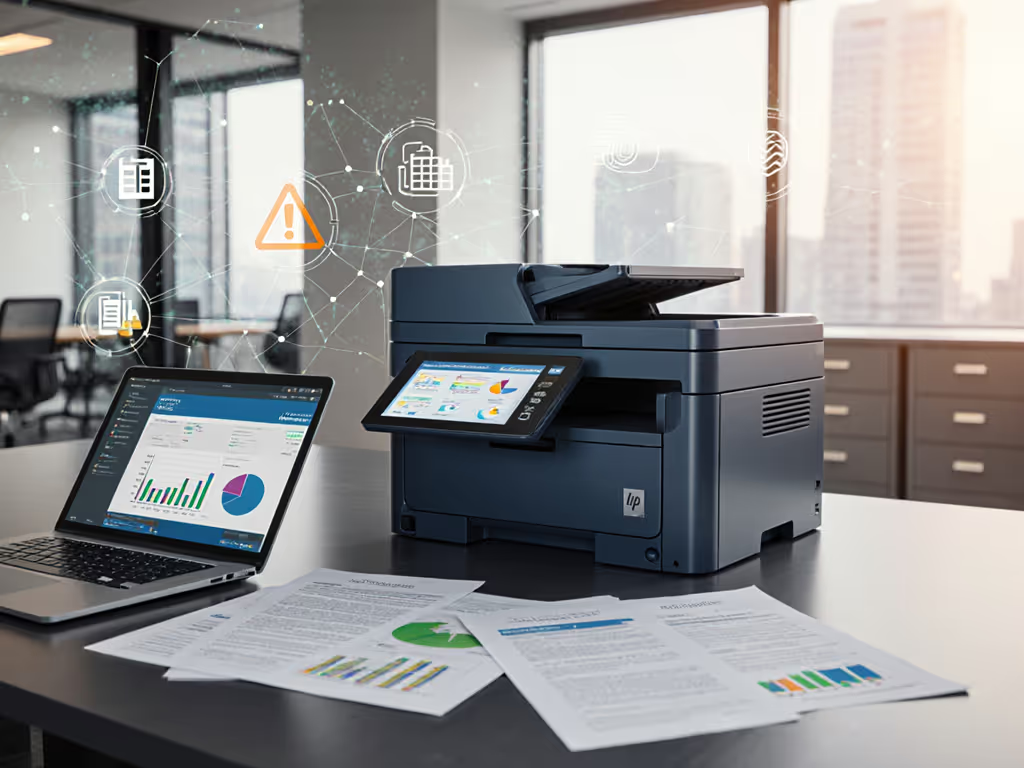
Beyond Sticker Price: Total Printer Ownership Cost Guide
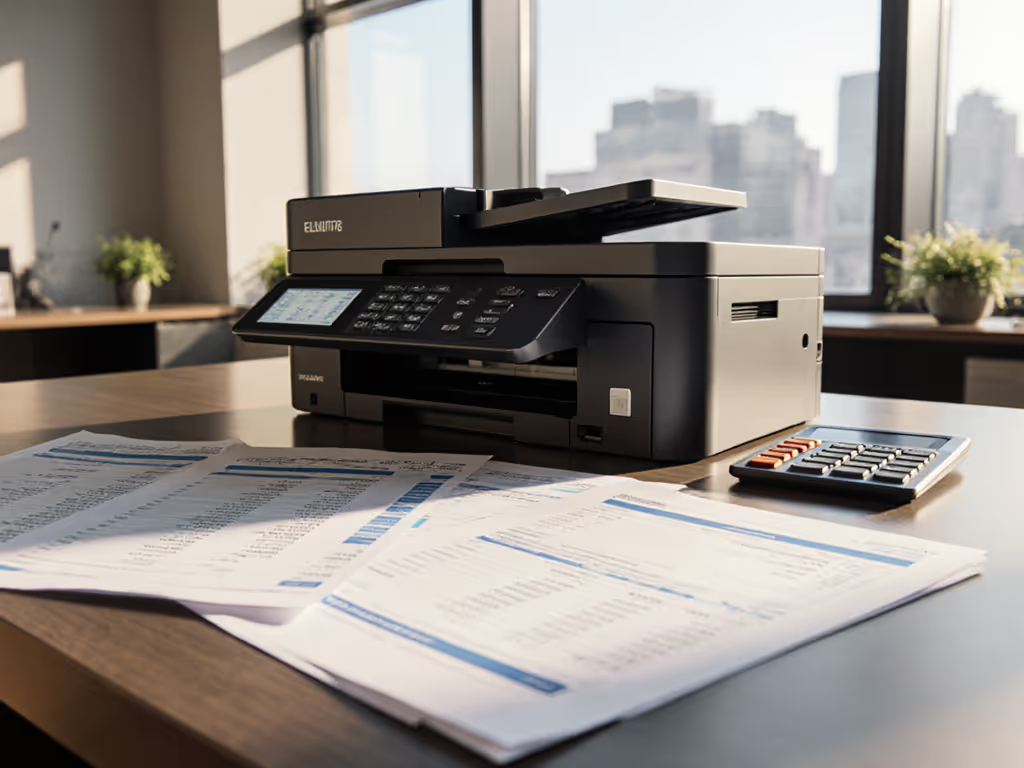
When finance teams fixate on commercial printer price, they overlook the critical reality: hardware costs represent less than 25% of your printer total cost of ownership. The true expense hides in predictable but often uncalculated elements (toner, maintenance, downtime, and administrative overhead). As a helpdesk lead who's transformed chaotic print environments, I've seen organizations slash costs by 30%+ simply by mapping real lifetime expenses. Fewer tickets prove the design, not the spec sheet.
Why Your Current Cost Calculations Are Flawed
Most procurement teams evaluate printers using three dangerous assumptions: sticker price matters most, specs equal value, and "it just works" until it doesn't. Search data confirms this blind spot: over 75% of businesses can't accurately quantify their printing spend. The result? Surprise costs that dwarf initial hardware investments.
The Hidden Cost Breakdown (Per 50,000 Annual Prints)
| Cost Factor | Typical Underestimation | Real-World Impact |
|---|---|---|
| Toner/ink supplies | 40 to 60% below actual | Low-yield cartridges trigger mid-cycle replacements |
| Maintenance kits/fusers | Often excluded | Causes 22% of unplanned downtime (per ManagedPrint data) |
| Downtime & helpdesk labor | Rarely tracked | 1 hour of printer downtime = $1,200+ in stalled workflows |
| Administration overhead | Ignored in quotes | 2 to 5 hours monthly per device for supply tracking |
Every step must justify itself, not just in your budget sheet, but in your team's daily workflow.
Consider this: A $400 desktop printer with 1,500-page toner cartridges might seem economical. But if your legal team prints 5,000 black-and-white pages monthly? That's three toner replacements per month, costing $210/month ($0.042 per page). Meanwhile, a $2,000 workgroup printer with 12,000-page toners costs $90/month ($0.018 per page). The cheaper device costs 133% more annually despite the lower sticker price.
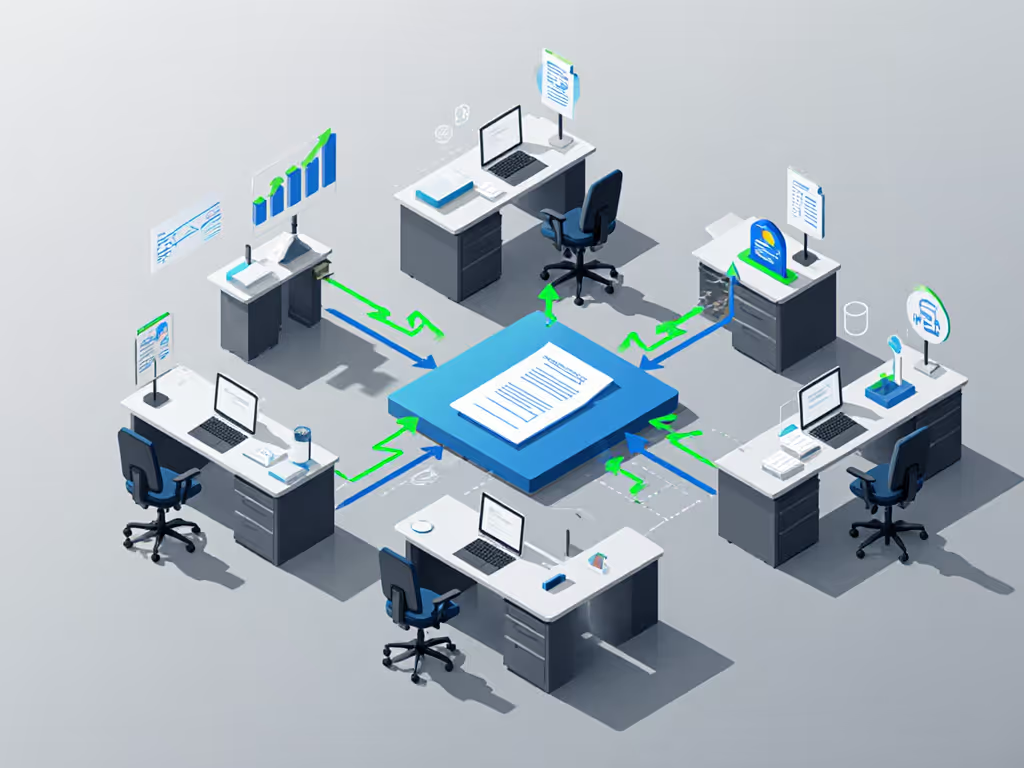
Calculate Costs Like an Operations Veteran
Stop guessing. Start measuring. Here's how to build a data-driven TCO model using your actual environment:
Step 1: Map Your True Print Behavior (Not Vendor Promises)
- Track real volumes: Install free tools like PaperCut Micro or PrinterLogic's free tier for 30 days. Never rely on "estimated monthly duty cycles."
- Segment by color usage: Healthcare/finance teams often print 15 to 25% color despite assuming 5%. Verify this, it heavily impacts toner yield comparison.
- Document paper paths: Specialty media (labels, cardstock) accelerates wear on fusers and rollers, inflating maintenance cost factors.
Step 2: Build Your Cost-per-Page Formula
Use this battle-tested equation:
True Cost per Page = (Toner Cost ÷ Real Yield) + (Maintenance Kit Cost ÷ Coverage) + (Labor Cost × Downtime Hours)
Example using real field data:
- Toner cost: $85 for 5,000-page yield (not the advertised 8,000!)
- Maintenance kit: $120 per 150,000 pages
- Downtime: 3 hours monthly at $75/hr labor cost
- Prints: 7,200 pages/month
True Cost = ($85 ÷ 5,000) + ($120 ÷ 150,000) + ($225 ÷ 7,200) = $0.017 + $0.0008 + $0.031 = $0.0488/page
This device costs $351/month, not the $216 predicted by vendor specs.
Step 3: Project Lifetime Costs (3 to 5 Years)
Multiply your true cost per page by conservative annual volume projections. For model-specific totals, see our five-year cost analysis. Then add:
- Hidden administrative costs: 15 to 20% of supply costs (invoice processing, helpdesk tickets)
- Hardware refresh timing: Most devices fail after 300,000 pages (not at 5-year leases).
- Disposal/data sanitization: $25 to $75 per device for certified HDD wipes
Preventing Cost Leaks: Design for Predictability
My helpdesk breakthrough came when we stopped fixing symptoms and engineered self-correcting workflows. These tactics reduce true ownership costs by making problems invisible before they escalate:
Preset-Driven Prevention
- Role-based scan presets: Legal teams auto-send to SharePoint with "Client Confidential" watermark. HR routes to encrypted PDFs. No training needed, just tap a button.
- Locked defaults: Black-and-white, duplex, and tray 1 (letter) as non-negotiable defaults. Color printing requires manager PIN, slashing color costs by 65% in our finance department.
- Self-service supply alerts: When toner drops below 20%, the control panel shows a QR code linking to your procurement portal (not the vendor's upsale page).
Maintenance Cost Mitigation
- Monitor duty cycle in real-time: Set alerts at 80% of machine capacity. Pushed a busy shipping label printer beyond 95% duty cycle? That's when fuser failures spike.
- Standardize across the fleet: Use identical models in all branch offices. Training materials, spare parts, and drivers work universally, cutting helpdesk tickets by 40%.
- Validate firmware updates: Never deploy blindly. Test first in one location. Our hospital client avoided a $14,000 toner lockout after discovering firmware 3.1 blocked third-party cartridges.
Your Action Plan: From Sticker Shock to Cost Control
- Audit one critical workflow this week: Track every step for invoice printing, from job submission to physical delivery. Time losses reveal hidden admin costs.
- Calculate true cost per page for your busiest device using real yield data (not specs).
- Implement one preset: Start with duplex scanning to your cloud storage. Measure helpdesk tickets before/after.
Printer lifespan expectancy isn't about years, it is about pages. A device printing 500 pages daily lasts 3 to 4 years. The same printer at 5,000 pages daily? Maybe 14 months. But when your workflows run silently, when users succeed without calls, that's when you know the TCO math finally adds up.
Every step must justify itself. Start auditing today, not when your helpdesk queue hits 50 tickets.
Related Articles

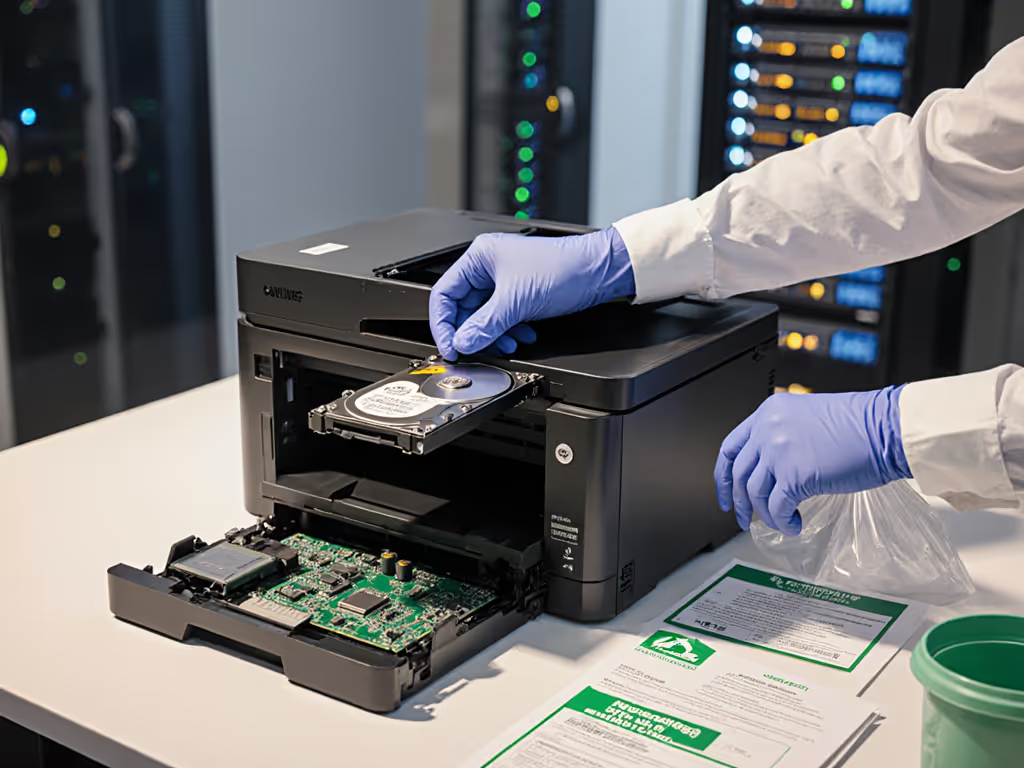
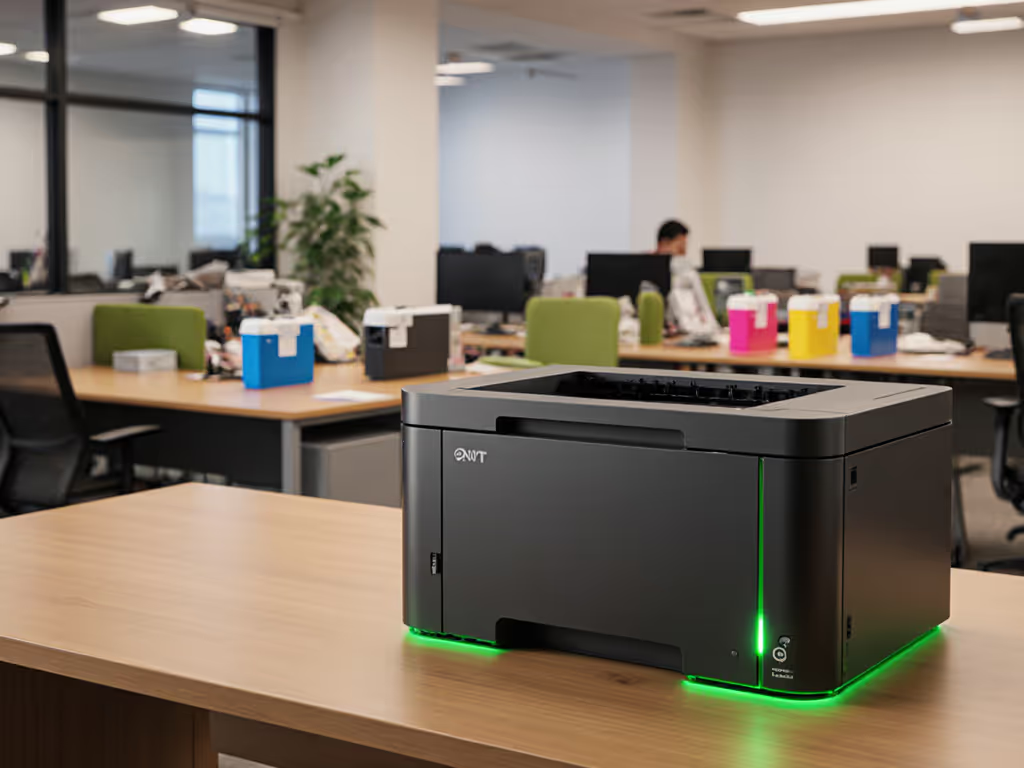
Eco Tank Printers That Actually Reduce Commercial TCO
Learn why consumer ink tank systems often raise TCO in commercial fleets due to downtime, clogs, and driver fragmentation - and how standardizing on enterprise laser workflows and supply chains cuts tickets and costs. Get clear criteria for when ink tanks fit and practical alternatives that prioritize uptime, driver stability, and compliance.
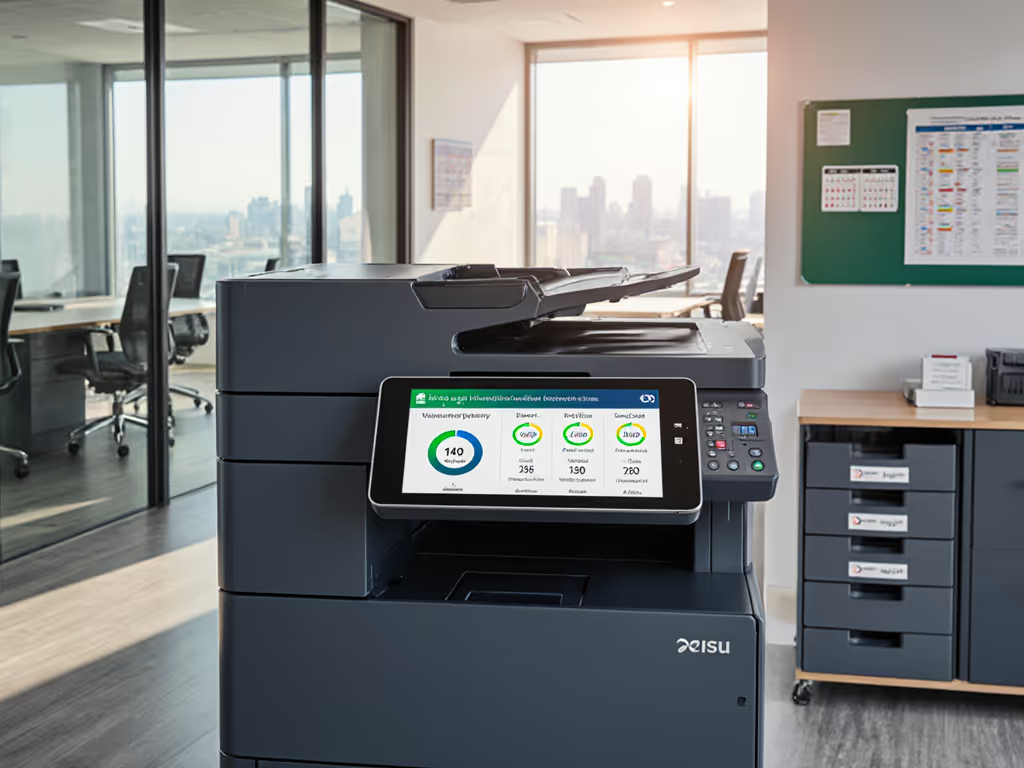
Business Printer Reliability: Top Brands Compared
Learn how to evaluate business printers by real-world uptime, service networks, and total repair costs, with data comparing HP, Canon, Brother, and Xerox. Use the workflow checklist and standardization tactics to cut downtime, compliance risk, and support tickets.
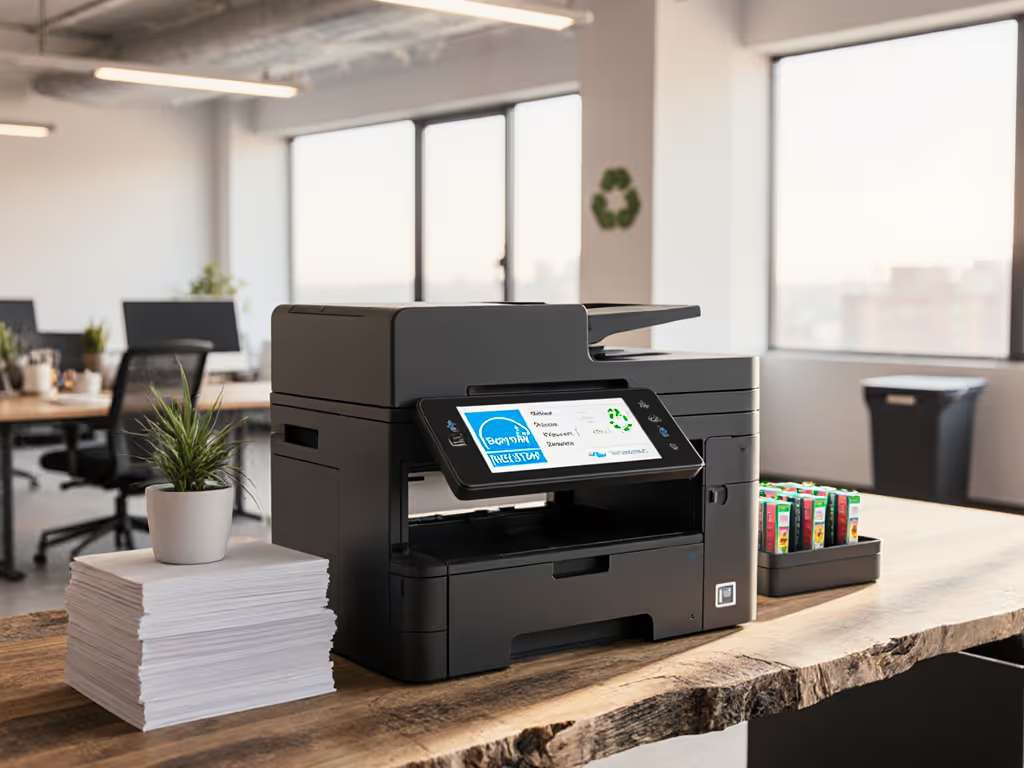
Sustainable Office Printing: Cut Costs, Waste & Risk
Turn sustainable printing into a security and compliance advantage by using PIN release, ENERGY STAR logging, duplex defaults, and certified consumables to cut costs, waste, and data leakage. A focused 48-hour audit roadmap and control mappings to HIPAA/PCI show how to prioritize high-risk areas and document results within 90 days.
